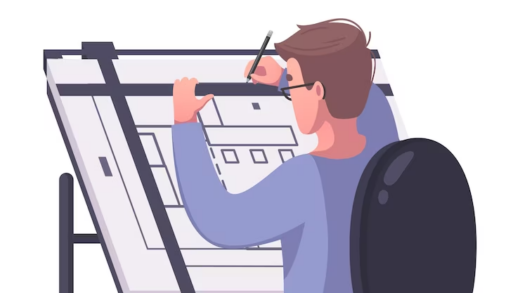Vector pictures and schemes are processed by special software. The most common programs include: AutoCAD, Adobe Illustrator, Adobe FreeHand, Adobe InDesign, Corel Draw, ArchiCAD.
The most common vector formats are:
- EPS – the most common format developed by Adobe in the PostScript language, supported by most special programs.
- DWG – format known to all engineers and designers, developed by Autodesk, used in the universal drawing program AutoCAD. Incompatible with earlier and later versions. Can be opened in Corel Draw.
- CDR – a format designed for the editor Corel Draw. Not compatible with other formats and their own early versions.
- AI – files that are created by the editor Adobe Illustrator. May be incompatible with earlier and later versions.
- FLA – working format of Adobe Flash, focused on animation. Using the Action Script language allows you to create manageable scripts.
- SVG – a format based on markup language XML. Its structure is a text file, which makes it possible to edit vector files in a text editor. Manipulation of image attributes is possible with the help of CSS stylesheets. There is support for animation.
- SWF is the format for the Flash Player. It allows you to work with animation.
Advantages and disadvantages of vector graphics
Among the main advantages of vector images are such features:
- Relatively small file sizes with moderate to little complexity and detail in the pictures. The volume can increase significantly with the number and complexity of details.
- Ability to easily edit and scale images, rotate, stretch, move and other operations without degradation of quality.
- Versatility. A file created once in vector format can be used for different media and purposes without changing it substantially. This can be a small picture on the site, and full-size banner outdoor advertising. No need to render the image again each time, as it has to do when working with bitmap graphics.
- Easily translate vector format into bitmap. The reverse translation is much more difficult.
- Ability to perform addition, subtraction, intersection, addition over objects.
- Relatively easy to learn how to work with vector drawings.
In addition to the advantages, vector graphics has disadvantages. The main disadvantages of this method of image processing are as follows:
- Technical limitations in use. Vector format does not allow to make images of high complexity with a significant number of details and gradients. Technically it is possible, but the final files will be too large, which makes the work senseless.
- Lack of vector support technique – cameras, cameras, scanners. All this equipment performs the creation of graphics in raster format.
- There are problems with compatibility between different formats and software for working with vector graphics. They often compete with each other. As a result, when using “non-native” software it is not possible to get a quality image without defects.
- Increased system requirements to the computer when rendering complex images. This is due to the fact that the file contains only coordinates. Rendering is performed after it is opened, which may require considerable resources.
- Increased complexity and laboriousness of creating high-quality images.
- Restrictions on the use of effects. The principle of vector graphics does not allow the use of many effects, gradients and shadows.





